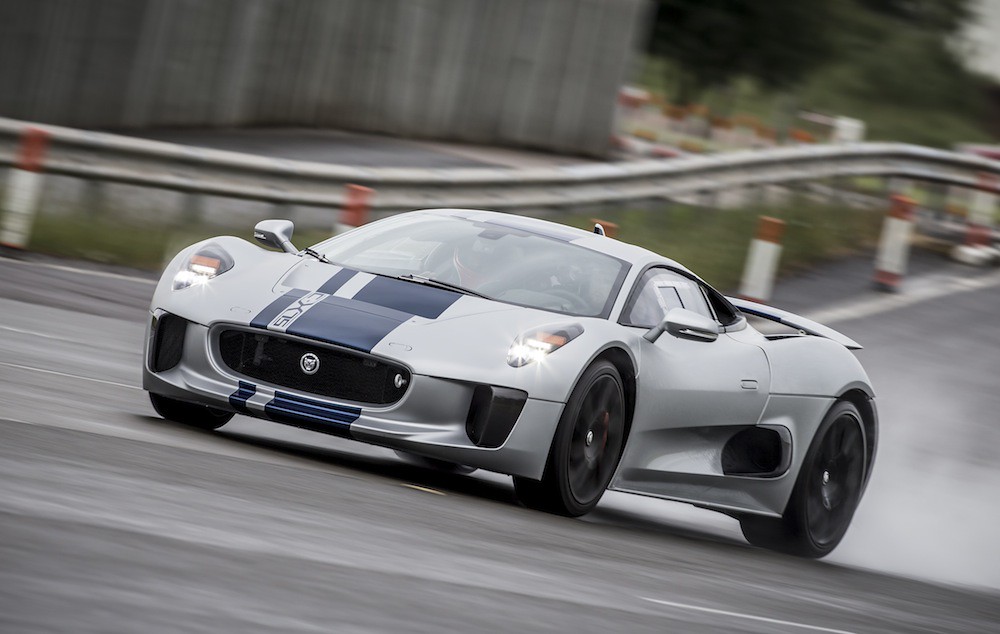
Pickup trucks continue to hold a significant place in the American automotive landscape, prized for their versatility, capability, and rugged appeal. Yet, the promise of reliability and robust performance often falls short, leading many enthusiastic buyers down a path of unexpected expenses and enduring frustration. Not all trucks are created equal, and some models, unfortunately, become significant liabilities long before they deliver on their initial appeal, saddling owners with mechanical headaches, disappointing fuel economy, and poor build quality.
These problematic pickups frequently mask their inherent flaws behind appealing price tags or an array of flashy features, ensnaring consumers who later find themselves regretting their purchase decisions. The cycle of constant repairs and limitations can quickly transform what was once a dream vehicle into an expensive nightmare. For any prospective truck owner, especially those considering used models, knowledge is not just power—it’s preventative savings, potentially shielding thousands of dollars in repair costs and countless hours of aggravation.
Our deep dive into the automotive landscape aims to empower you with objective, data-driven insights. By highlighting specific models known for their propensity to become troublesome well before hitting the 80,000-mile mark, we provide actionable advice designed to help you make informed purchasing decisions, prioritizing long-term durability, manageable maintenance costs, and overall value. Understanding which trucks to approach with extreme caution can be the difference between a dependable companion and a money pit.
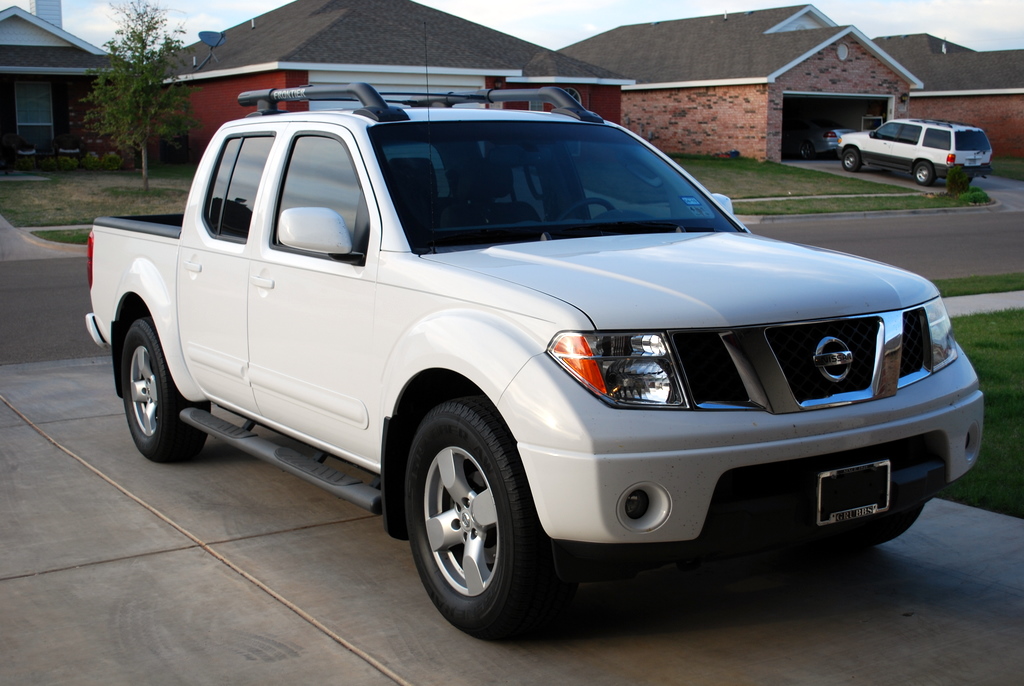
1. **Nissan Frontier (2005-2019)**The Nissan Frontier models produced between 2005 and 2019 suffered significantly from an aging design that remained largely static for 14 years. This prolonged lack of evolution meant the truck progressively fell behind its competitors in crucial areas such as technological advancements, essential safety features, and overall refinement. The static design not only impacted the driving experience but also hinted at deeper issues within the model’s longevity.
Owners frequently reported a particularly severe and costly problem: transmission failures. These critical powertrain issues often surfaced around the 90,000-mile mark, a mileage point that for many trucks, represents the prime of their operational life rather than the onset of major mechanical breakdowns. Addressing these failures typically required expensive repairs or, in many cases, a complete transmission replacement, imposing substantial unforeseen costs on owners.
Beyond the significant mechanical concerns, the interior of these Frontier models consistently received criticism for its build quality. The materials used throughout the cabin felt cheap to the touch and exhibited a tendency to wear out quickly, showing visible signs of deterioration even under normal use. This rapid degradation of interior components detracted from the ownership experience and diminished the truck’s perceived value.
Adding to the list of drawbacks, the fuel economy of the 2005-2019 Nissan Frontier remained consistently poor. Compared to similar-sized trucks within its competitive class, this model struggled to offer efficient operation, translating directly into higher ongoing running costs for owners. The combination of dated design, major mechanical issues, a rapidly deteriorating interior, and poor fuel efficiency made this generation of Frontier a challenging proposition for long-term ownership.
Car Model Information: 2017 Nissan Frontier SV-I4
Categories: All set index articles, Articles with short description, Nissan vehicles, Set index articles on cars, Short description is different from Wikidata
Summary: The Nissan Frontier is a nameplate used on three different pickup truck models by Nissan:
Nissan Frontier (international), an alternative nameplate for the NP300/Navara on some markets.
Nissan Frontier (North America), a rebadged NP300/Navara from 1997 to 2021, then became a separate model since 2021.
Nissan Frontier Pro, a rebadged Dongfeng Z9 that will be available from 2025. Available as both a diesel and plug-in hybrid, with the latter being the initial variant.
Get more information about: Nissan Frontier
Buying a high-performing used car >>>
Brand: Nissan Model: Frontier
Price: $17,435 Mileage: 63,351 mi.
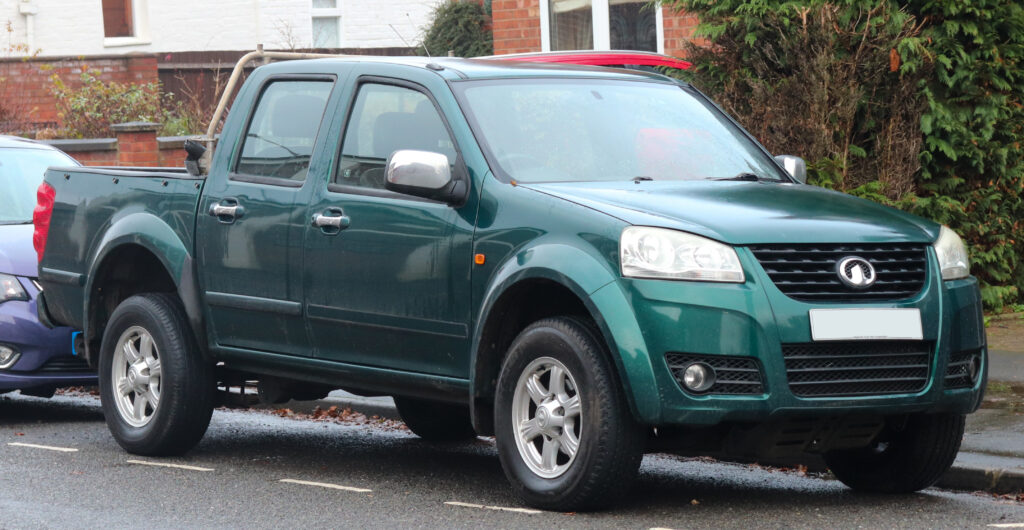
2. **Great Wall Steed (2012-2016)**The Great Wall Steed, a Chinese-made pickup truck, faced considerable challenges in terms of overall quality and performance during its 2012-2016 production run. The vehicle suffered from notably poor build quality, which undermined its reliability and durability expectations from the outset. Coupled with inadequate safety standards, the Steed struggled to meet the rigorous demands typically associated with modern pickup trucks.
One of the critical flaws identified in this model was its inadequate rust protection, a significant concern for any vehicle, particularly a truck expected to endure varied environmental conditions. Owners reported that the chassis and body panels were highly susceptible to rust, even when operated in mild climates. This rapid onset of corrosion not only compromised the vehicle’s structural integrity but also severely shortened its lifespan and diminished its aesthetic appeal.
Furthermore, the diesel engine offered in the Great Wall Steed developed multiple reliability issues. These engine problems contributed to frequent breakdowns and required extensive maintenance, leading to considerable downtime and repair expenses for owners. The powerplant, a core component of any truck’s utility, proved to be a consistent source of frustration, failing to deliver the dependable performance expected by consumers.
Perhaps the most significant long-term issue for owners outside of China was the major problem with parts availability. When components inevitably failed or required replacement, sourcing the necessary parts became a significant hurdle. This scarcity of spare parts resulted in extended repair times and often higher costs, transforming even minor issues into considerable inconveniences and highlighting the risks associated with less established brands in global markets.
Car Model Information: 2019 Volkswagen Tiguan 2.0T SE 4MOTION
Name: Great Wall Wingle
Caption: Great Wall Wingle 7
Manufacturer: Great Wall Motor
Production: 2006–present
Class: pickup truck
BodyStyle: crew cab
Categories: 2000s cars, 2010s cars, Articles containing Chinese-language text, Articles with short description, CS1 Italian-language sources (it)
Summary: The Great Wall Wingle is series of pick-up trucks manufactured by the Chinese company Great Wall Motors (风骏) since 2010. Originally launched as a single pickup model, the model was since updated and facelifted multiple times with different variants offered at the same time.
Get more information about: Great Wall Wingle
Buying a high-performing used car >>>
Brand: Great Wall Model: Steed
Price: $12,956 Mileage: 115,423 mi.
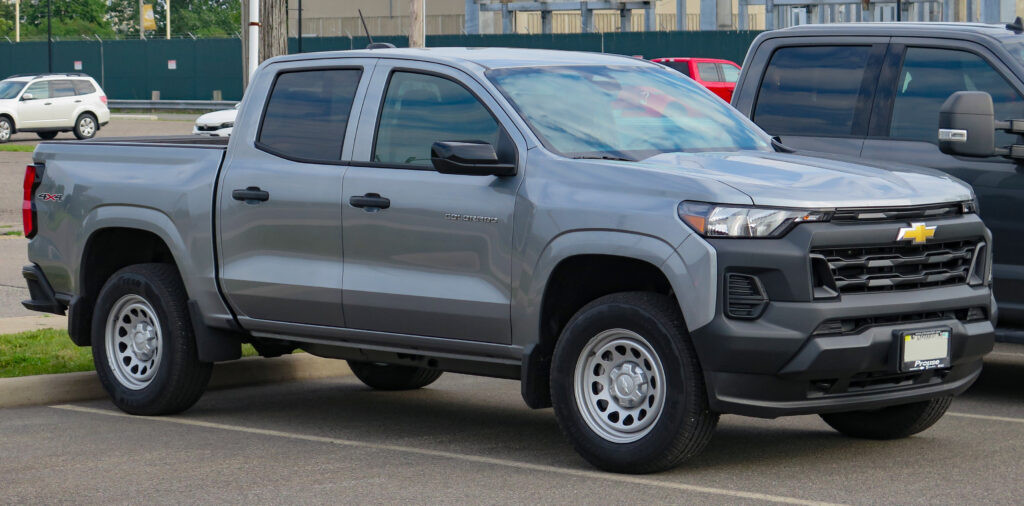
3. **Chevrolet Colorado (2015-2016)**Early models of the 2015-2016 Chevrolet Colorado generation were plagued by significant transmission shudder issues. This persistent vibration often required multiple dealer visits for diagnosis and attempted rectification, consuming valuable owner time and patience. The problem, a notable defect in the powertrain, cast a shadow over the initial years of this revamped model, signaling potential long-term reliability concerns for a critical component.
Under the hood, the 2.5L engine available in these early Colorado models often proved to be underpowered for fundamental truck tasks. While adequate for light duties, it conspicuously lacked the necessary muscle for effective acceleration, especially when carrying payloads or towing. This deficiency in power output diminished the truck’s utility and left many owners feeling that the vehicle struggled to perform its core functions as a pickup.
The interior, another key aspect of daily ownership, also presented issues. The materials selected for the cabin were prone to scratching easily and showed signs of wear prematurely, detracting from the overall perceived quality and comfort. This rapid deterioration of interior surfaces meant that the truck quickly lost its ‘new’ feel, raising questions about its long-term durability and resistance to everyday use.
Adding to the technological woes, the infotainment system in the 2015-2016 Colorado frequently experienced freezing or crashing without warning. Such glitches are not only annoying but can also compromise navigation and communication functions, creating a frustrating user experience. The combination of powertrain problems, an underperforming engine, subpar interior quality, and an unreliable infotainment system made these early Colorado models a less-than-ideal choice for truck buyers seeking reliability and refinement.
Car Model Information: 2022 Chevrolet Colorado ZR2
Name: Chevrolet Colorado
Caption: 2024 Chevrolet Colorado Z71
Manufacturer: General Motors
Production: 2003–2012, 2014–present (US),2004–2020
(Thailand),2011–present (Brazil)
Class: Pickup truck,Pickup truck
Layout: Front-engine, rear-wheel-drive layout
Predecessor: Chevrolet S-10,Chevrolet D-Max,Holden Rodeo,Holden Ute
Aka: GMC Canyon,Holden Colorado
Categories: 2010s cars, 2020s cars, All-wheel-drive vehicles, All articles with dead external links, Articles with dead external links from November 2016
Summary: The Chevrolet Colorado (sharing mechanical commonality with the GMC Canyon) is a series of compact pickup trucks (mid-size since second generation) marketed by American automaker General Motors. They were introduced in 2004 to replace the Chevrolet S-10 and GMC S-15/Sonoma compact pickups. The Colorado is named after the U.S. state of Colorado, while the Canyon took its name from the deep chasm between cliffs.
Get more information about: Chevrolet Colorado
Buying a high-performing used car >>>
Brand: Chevrolet Model: Colorado
Price: $33,991 Mileage: 40,794 mi.
Read more about: Jalopnik’s Ultimate Warning: 14 Trucks That Will Leave You Stranded (And Broke) On The Side Of The Road

4. **Ford F-150 (2004-2006)**Certain model years of the Ford F-150, specifically those from 2004 to 2006, developed a range of serious engine problems that became a significant source of concern for owners. Among the most notorious issues were faulty spark plugs, which had a tendency to break off during removal. This seemingly simple maintenance task could escalate into a complex and expensive engine repair, frustrating both mechanics and vehicle owners alike.
Complementing the engine woes, the automatic transmission in these F-150s often failed prematurely, frequently before the vehicle reached 100,000 miles. Such a critical component failure at relatively low mileage necessitated costly rebuilds or, in many instances, complete replacements. The expense and inconvenience associated with these transmission issues contributed substantially to the truck’s overall cost of ownership, making it a financial burden for many.
Rust problems were another widespread affliction for these F-150 models. Corrosion significantly affected numerous body panels, becoming particularly prevalent and unsightly around the wheel wells. This pervasive rust not only detracted from the truck’s appearance but also raised concerns about its structural integrity and long-term durability, especially in climates prone to harsh weather or road salt exposure.
Even by the standards of its era, which were generally more forgiving for truck fuel consumption, the 2004-2006 Ford F-150 models were noted for their poor fuel economy. This inefficiency meant higher operational costs for owners on an ongoing basis. The cumulative effect of these widespread mechanical and structural issues, coupled with high running costs, positioned these specific F-150 model years as considerably more trouble than they were worth for many consumers.
Car Model Information: 2024 Ford F-150 XLT
Name: Ford F-Series
Caption: 2022 Ford F-150 Lariat Luxury
Manufacturer: Ford Motor Company
Aka: Ford Lobo (Mexico, 1992–present)
Production: 1948–present
Class: Pickup truck#Full-size pickup truck
Layout: Front-engine, rear-wheel-drive layout,rear-wheel drive
Predecessor: 1941 Ford
Categories: All-wheel-drive vehicles, All Wikipedia articles written in American English, All articles that may contain original research, All articles with unsourced statements, Articles that may contain original research from September 2020
Summary: The Ford F-Series is a series of light-duty trucks marketed and manufactured by the Ford Motor Company since model year 1948 as a range of full-sized pickup trucks — positioned between Ford’s Ranger and Super Duty pickup trucks. Alongside the F-150 (introduced in 1975), the F-Series also includes the Super Duty series (introduced in 1999), which includes the heavier-duty F-250 through F-450 pickups, F-450/F-550 chassis cabs, and F-600/F-650/F-750 Class 6–8 commercial trucks.
Get more information about: Ford F-Series
Buying a high-performing used car >>>
Brand: Ford Model: F-150
Price: $39,997 Mileage: 45,515 mi.

5. **Toyota Tundra (2007-2009)**Despite Toyota’s widely recognized reputation for reliability, early models of the 2007-2009 Tundra generation presented a series of significant and unexpected problems. One of the most common issues reported by owners was excessive oil consumption, which required frequent top-offs between scheduled oil changes. This unusual appetite for oil was a nuisance and a red flag for potential engine wear, adding an unforeseen maintenance task and expense to vehicle ownership.
Perhaps even more alarming was the widespread frame rust issues that plagued these Tundra models. The corrosion was so severe and prevalent that Toyota was compelled to issue a recall program to address the problem, underscoring the gravity of the structural integrity concerns. Such extensive frame rust not only compromised the vehicle’s safety but also severely impacted its long-term viability and resale value, eroding owner confidence in a brand typically associated with unwavering quality.
Adding to the list of mechanical faults were failures of the secondary air pump system. These failures often triggered the dreaded check engine light, indicating an emissions system malfunction. Rectifying these issues typically involved expensive repairs, further burdening owners with unforeseen costs and illustrating a weakness in the truck’s environmental control components that required significant professional intervention.
Inside the cabin, the quality of interior plastic components proved to be disappointing. Many owners reported that these plastics cracked and broke easily with normal use, diminishing the aesthetic appeal and tactile quality of the interior. This premature deterioration of interior elements highlighted a discrepancy between the truck’s robust exterior image and the actual durability of its cabin materials, detracting from the overall ownership experience and the vehicle’s perceived value.
Car Model Information: 2023 Toyota Tundra SR5
Name: Toyota Tundra
Manufacturer: Toyota
Production: May 1999 – present
ModelYears: 2000–present
Assembly: San Antonio,Texas
Class: Pickup truck#Full-size pickup truck
Layout: unbulleted list
Related: Toyota Sequoia
Predecessor: Toyota T100
Caption: 2022 Toyota Tundra Limited
Categories: 2000s cars, 2010s cars, 2020s cars, All-wheel-drive vehicles, All Wikipedia articles written in American English
Summary: The Toyota Tundra is a full-size pickup truck manufactured in the United States by the Japanese manufacturer Toyota since May 1999. The Tundra was the second full-size pickup to be built by a Japanese manufacturer (the first was the Toyota T100), but the Tundra was the first full-size pickup from a Japanese manufacturer to be built in North America. The Tundra was nominated for the North American Truck of the Year award and was Motor Trend magazine’s Truck of the Year in 2000 and 2008. Initially built in a new Toyota plant in Princeton, Indiana, production was consolidated in 2008 to Toyota’s San Antonio, Texas, factory.
Get more information about: Toyota Tundra
Buying a high-performing used car >>>
Brand: Toyota Model: Tundra
Price: $43,961 Mileage: 34,237 mi.
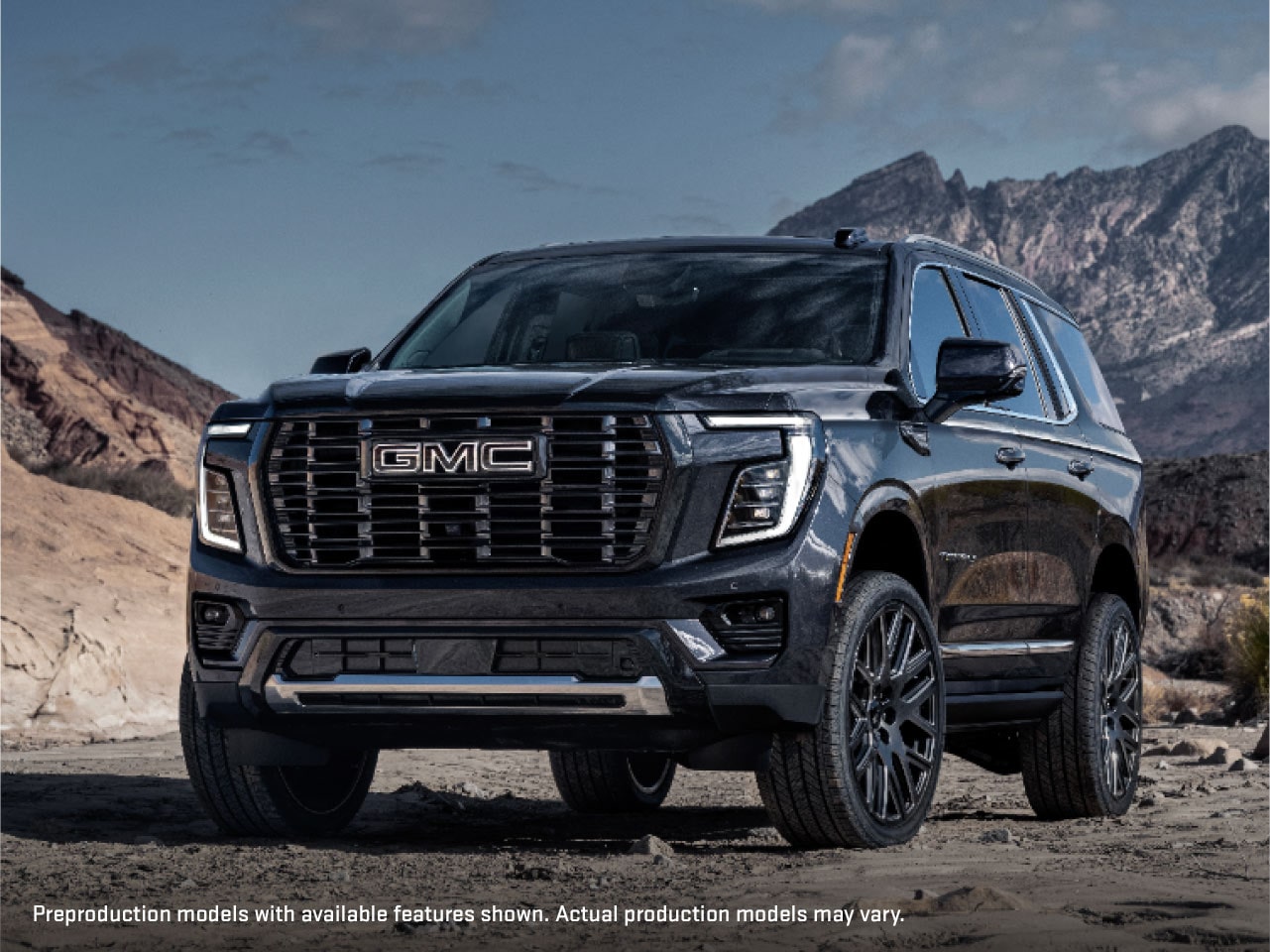
6. **GMC Canyon (2015-2016)**The 2015-2016 GMC Canyon models, being closely related to the Chevrolet Colorado, unfortunately shared many of its sibling’s inherent problems. A particularly persistent issue that mirrored the Colorado was the significant transmission vibration, commonly referred to as shuddering. This unwelcome characteristic created an uncomfortable driving experience and often necessitated repeated visits to service centers, leading to owner dissatisfaction and ongoing inconvenience for a new truck.
Under the hood, the available four-cylinder engine in these Canyon models frequently struggled to effectively move the truck, especially when it was loaded with cargo or passengers. This lack of adequate power meant the engine often felt strained and underperforming for typical truck duties, impacting its utility and the confidence of drivers in its capabilities. For a vehicle designed for hauling and towing, this deficiency was a significant drawback.
Interior quality, a point of expectation for a GMC product, also fell short. Owners frequently reported issues such as persistent squeaks and rattles within the cabin, which quickly eroded the sense of refinement and durability. These incessant noises contributed to a cheaper feel than anticipated, especially for a vehicle that often commanded a higher price point than its direct competitors, failing to meet consumer expectations for a premium experience.
Over time, the steering system in these Canyon models also developed noticeable play and looseness. This degradation in steering precision not only reduced the driving enjoyment but, more critically, could compromise the vehicle’s handling and safety. The combination of a troublesome transmission, an underpowered engine, a noisy interior, and a deteriorating steering system presented a comprehensive set of reliability and quality concerns that made the 2015-2016 GMC Canyon a less-than-ideal choice for long-term ownership.
Car Model Information: 2022 GMC Canyon Denali
Name: Chevrolet Colorado
Caption: 2024 Chevrolet Colorado Z71
Manufacturer: General Motors
Production: 2003–2012, 2014–present (US),2004–2020
(Thailand),2011–present (Brazil)
Class: Pickup truck,Pickup truck
Layout: Front-engine, rear-wheel-drive layout
Predecessor: Chevrolet S-10,Chevrolet D-Max,Holden Rodeo,Holden Ute
Aka: GMC Canyon,Holden Colorado
Categories: 2010s cars, 2020s cars, All-wheel-drive vehicles, All articles with dead external links, Articles with dead external links from November 2016
Summary: The Chevrolet Colorado (sharing mechanical commonality with the GMC Canyon) is a series of compact pickup trucks (mid-size since second generation) marketed by American automaker General Motors. They were introduced in 2004 to replace the Chevrolet S-10 and GMC S-15/Sonoma compact pickups. The Colorado is named after the U.S. state of Colorado, while the Canyon took its name from the deep chasm between cliffs.
Get more information about: Chevrolet Colorado
Buying a high-performing used car >>>
Brand: GMC Model: Canyon
Price: $37,988 Mileage: 35,558 mi.
Read more about: Jalopnik’s Ultimate Warning: 14 Trucks That Will Leave You Stranded (And Broke) On The Side Of The Road

7. **Honda Ridgeline (2006-2008)**Early iterations of the Honda Ridgeline, specifically those from 2006 to 2008, introduced a unique approach to the pickup truck segment but were not without their significant flaws. One prominent concern revolved around serious VCM (Variable Cylinder Management) system issues. These problems could lead to excessive oil consumption, a troublesome and often costly defect that required owners to frequently monitor and top-off their engine oil between routine changes, deviating from expected maintenance schedules.
Another key area of concern involved the rear differential, which frequently required premature replacement due to wear. This component is crucial for power delivery and handling, and its early failure represented a substantial mechanical defect. The cost and inconvenience of replacing such a major drivetrain component added considerably to the overall ownership expenses and raised questions about the Ridgeline’s long-term durability in a truck context.
Beyond the internal mechanics, the exterior body panels of these early Ridgelines exhibited unusual wear patterns and paint problems over time. This included issues like peeling, fading, or an uneven finish, which detracted significantly from the truck’s appearance and aesthetic value. Such cosmetic flaws, combined with underlying mechanical issues, gave a strong impression of a vehicle that struggled with its material quality and finish longevity.
A fundamental design limitation of the Honda Ridgeline was its bed configuration. Compared to more traditional body-on-frame trucks, the integrated bed design inherently limited its practical hauling capabilities. This characteristic meant that the Ridgeline, while offering a unique blend of SUV-like comfort and truck-like utility, ultimately fell short in core functionality for buyers needing robust cargo capacity, creating a mismatch between expectation and reality for many truck users. The confluence of VCM issues, premature differential wear, paint problems, and limited practical utility made these early Ridgeline models a challenging investment for consumers seeking a dependable and versatile pickup.
Continuing our exploration into the trucks that are likely to become more trouble than they’re worth before hitting 80,000 miles, we now turn our attention to additional models that have consistently underperformed in critical areas of reliability, owner satisfaction, and long-term value. These vehicles, despite their initial appeal or brand reputation, often harbor underlying issues that can quickly deplete an owner’s patience and finances.
Our objective remains clear: to arm you with the detailed knowledge necessary to navigate the complex truck market with confidence. By shedding light on these problematic pickups, we hope to guide you toward making decisions that prioritize long-term durability and minimize the unexpected costs that can plague an owner’s experience.
Car Model Information: 2023 Honda Ridgeline Black
Name: Honda Ridgeline
Manufacturer: Honda
Caption: 2022 Honda Ridgeline
Production: 2005–early 2015,2016–present
ModelYears: 2006–2014,2017–present
Assembly: Alliston, Ontario
Class: Pickup truck#Mid-size pickup truck
BodyStyle: 4-door pickup truck
Layout: ubl
Categories: 2010s cars, All-wheel-drive vehicles, All Wikipedia articles written in American English, Articles with short description, CS1 maint: multiple names: authors list
Summary: The Honda Ridgeline is a mid-size pickup truck manufactured and marketed by Honda since the 2006 model year, over two generations in a unibody, crew–cab, short-box configuration with a transverse-mounted engine.
Get more information about: Honda Ridgeline
Buying a high-performing used car >>>
Brand: Honda Model: Ridgeline
Price: $33,830 Mileage: 46,675 mi.
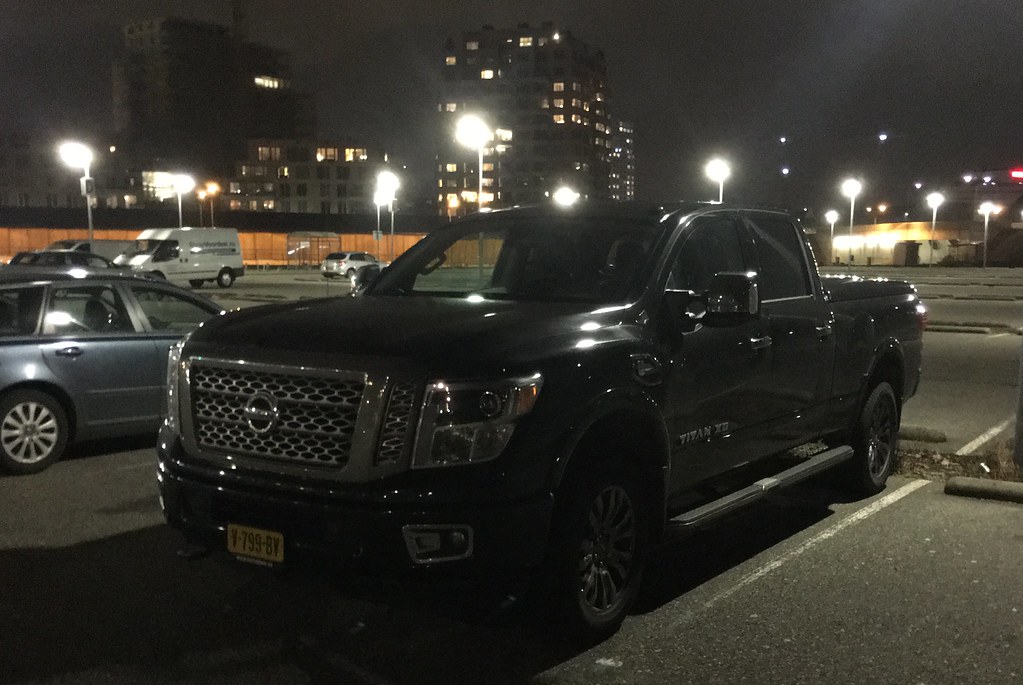
When the Nissan Titan XD launched, it aimed to bridge the gap between half-ton and heavy-duty trucks, offering a unique proposition with its optional Cummins diesel engine. However, this engine, while powerful on paper, proved to be a significant source of contention for many owners, plagued by multiple sensor and emissions system failures. These issues frequently led to costly and time-consuming repairs, undermining the truck’s promise of robust performance and reliability.
Beyond the engine compartment, the Titan XD’s fuel economy figures consistently disappointed, even when measured against the less stringent standards of heavy-duty trucks. Owners found that the real-world operational costs were higher than anticipated, detracting from the overall value proposition. This inefficiency added another layer of ongoing expense to a vehicle already struggling with mechanical integrity.
Furthermore, the interior quality of the 2016-2018 Titan XD models often fell short when compared to its rivals. Reviewers and owners alike noted the use of cheaper materials and signs of poor assembly, which diminished the sense of durability and refinement expected in a modern pickup. This perceived lack of quality in the cabin further contributed to owner dissatisfaction, especially given the truck’s positioning in the market.
Ultimately, the Titan XD suffered from an identity confusion. It was often deemed too heavy and cumbersome for typical half-ton truck duties, yet it lacked the raw capability and proven reliability required for serious heavy-duty work. This awkward positioning, combined with its inherent mechanical and quality issues, made it a challenging choice for consumers seeking a dependable and purpose-built truck.
Car Model Information: 2019 Volkswagen Tiguan 2.0T SE 4MOTION
Name: Nissan Titan
Manufacturer: Nissan
Production: September 2003 – November 2024
ModelYears: 2004–2024
Assembly: Canton, Mississippi
Class: Pickup_truck#Full-size_pickup_truck
BodyStyle: 2-door pickup truck,4-door pickup truck
Layout: Front-engine, rear-wheel-drive layout
Platform: Nissan F-Alpha
Caption: 2021 Nissan Titan Crew Cab PRO-4X (Canada)
Categories: 2010s cars, 2020s cars, All-wheel-drive vehicles, All articles with unsourced statements, Articles with short description
Summary: The Nissan Titan is a full-size pickup truck which was manufactured by Nissan USA in Canton, Mississippi for the North American market from September 2003 to November 2024 over two generations. The first generation was produced for the 2004-2015 model years (MY), with an intermediate refresh for MY 2008. The second generation was made for MY 2016-2024, with production beginning in November 2015 and an intermediate refresh for MY 2020. Both generations have an extended cab or crew cab design, with the second-generation also having a two-door regular cab variant. The Titan has a V8 engine which is mounted in the front and either rear-wheel drive or four-wheel drive, with the second generation adding a diesel engine alongside a revised version of the gasoline engine used in the first generation.
Get more information about: Nissan Titan
Buying a high-performing used car >>>
Brand: Nissan Model: Titan XD
Price: $12,956 Mileage: 115,423 mi.

9. **Hummer H2 SUT (2005-2009)**The Hummer H2 SUT, a unique truck version of the iconic H2 SUV, was an undeniably distinctive vehicle that prioritized style and presence over practical utility. However, its immense size and weight contributed to an extremely poor fuel economy, notoriously averaging around 10 miles per gallon. This made it one of the most expensive trucks to fuel, quickly adding up to substantial ownership costs over its lifespan.
A fundamental design flaw for a vehicle marketed with truck capabilities was its remarkably small bed size. This severely limited its practical cargo capacity, making it ill-suited for the hauling and utilitarian tasks typically associated with pickup trucks. The SUT designation promised versatility, but its actual functionality in this regard was a significant letdown for owners.
Despite its imposing exterior and luxury price point, the interior quality of the Hummer H2 SUT often fell far below expectations. The cabin materials and finishes did not align with the premium cost, leading to a disconnect between perceived luxury and actual execution. This disparity contributed to a sense of unfulfilled promise for buyers who anticipated a more refined and well-appointed environment.
Moreover, the H2 SUT’s complex systems and specialized components translated into extremely high maintenance costs. When issues inevitably arose, repairs were often more expensive and challenging to complete, further burdening owners with unforeseen expenses. This combination of poor fuel economy, limited utility, and high upkeep costs made the H2 SUT a problematic choice for long-term ownership.
Car Model Information: 2025 Hyundai PALISADE XRT
Name: Hummer H2
Manufacturer: AM General
Production: 2002–2009
ModelYears: 2003–2009
Assembly: Mishawaka, Indiana,Kaliningrad,designer = Clay Dean (2000)
Class: Full-size SUV
BodyStyle: Sports utility vehicle,pickup truck
Platform: GMT800
Related: Chevrolet Silverado,Chevrolet Avalanche,Chevrolet Tahoe,Chevrolet Suburban,Cadillac Escalade
Layout: Front-engine, four-wheel-drive layout,four-wheel drive
Engine: General Motors LS-based small-block engine#LQ4
Transmission: 4L60E,4-speed 4L65E automatic (2005–2007),automatic transmission
Wheelbase: 122.8 in
Abbr: on – 6.2 L
Length: 203.5 in
Width: 81.3 in
Height: 2002–03: {{convert,77.8,in,mm,0,abbr=on
Weight: {{convert,6400,lb,kg,0,abbr=on
Categories: 2000s cars, AM General vehicles, All-wheel-drive vehicles, All articles needing additional references, Articles needing additional references from January 2024
Summary: The Hummer H2 is a full-size off-road SUV that was marketed by Hummer and built in the AM General facility under contract from General Motors from 2002 until 2009. It is based on a modified GMT820 GM three-quarter-ton pickup truck in the front and a half-ton 1500 frame in the rear. A four-door pickup truck version with a midgate that opens the vehicle’s interior to the external cargo bed was introduced for the 2005 model year as the H2 SUT (sport utility truck).
Get more information about: Hummer H2
Buying a high-performing used car >>>
Brand: Hummer Model: H2 SUT
Price: $40,788 Mileage: 5,081 mi.

10. **Chevrolet Silverado 1500 (2014)**The 2014 model year of the Chevrolet Silverado 1500, despite being part of a popular truck line, was unfortunately plagued by numerous electrical system problems. These issues ranged from minor annoyances to critical failures affecting essential functions of the vehicle, often leading to frustrating diagnostic efforts and repeated trips to service centers. Such widespread electrical glitches cast a significant shadow over its reliability.
Furthermore, many owners and critics observed that the quality of the interior design and materials in this generation fell noticeably below the standards set by previous Silverado models. This decline in cabin refinement meant that the truck felt less premium and durable, quickly showing signs of wear and detracting from the overall ownership experience, especially for a vehicle that sees heavy daily use.
A significant mechanical issue was the propensity for failures in the active fuel management system. When this system malfunctioned, it frequently led to excessive oil consumption, requiring owners to vigilantly monitor and top off their engine oil between scheduled maintenance intervals. This not only added an unexpected chore but also hinted at deeper engine health concerns that could escalate over time.
Adding to the powertrain concerns, transmission shifting problems became a common complaint among owners after the truck had accumulated only moderate mileage. These issues could manifest as rough shifts, hesitation, or even complete transmission failures, necessitating expensive repairs or replacements. The combined effect of these electrical, interior, and powertrain problems made the 2014 Silverado 1500 a model to approach with considerable caution.
Car Model Information: 2025 Hyundai PALISADE XRT
Name: Chevrolet Silverado/GMC Sierra
Caption: 2022 Silverado 2500HD High Country
Manufacturer: General Motors
Aka: unbulleted list
Production: 1998–present
Assembly: unbulleted list
Class: unbulleted list
BodyStyle: unbulleted list
Layout: unbulleted list
Predecessor: unbulleted list
Categories: 2000s cars, 2010s cars, 2020s cars, All-wheel-drive vehicles, All Wikipedia articles written in American English
Summary: The Chevrolet Silverado is a range of trucks manufactured by General Motors under the Chevrolet brand. Introduced for the 1999 model year, the Silverado is the successor to the long-running Chevrolet C/K model line. Taking its name from the top trim level from the Chevrolet C/K series, the Silverado is offered as a series of full-size pickup trucks, chassis cab trucks, and medium-duty trucks. The fourth generation of the model line was introduced for the 2019 model year.
The Chevrolet Silverado shares mechanical commonality with the identically related GMC Sierra; GMC ended the use of the C/K nomenclature a model generation prior to Chevrolet. In Mexico, high-trim level versions of the Silverado use the Chevrolet Cheyenne name (not to be confused with the 2003 concept). Competing against the Ford F-Series, Ram pickup, Toyota Tundra, and Nissan Titan, the Silverado is among the best-selling vehicles in the United States, having sold over 12 million trucks since its introduction in 1998 as a 1999 model year.
Get more information about: Chevrolet Silverado
Buying a high-performing used car >>>
Brand: Chevrolet Model: Silverado 1500
Price: $40,788 Mileage: 5,081 mi.
Read more about: Seriously, What Happened? 13 Once-Favorite 4x4s That Off-Roaders Now View With Suspicion (And Why!)

11. **Ford Ranger (2019)**The reintroduction of the Ford Ranger in 2019 was met with considerable anticipation, but the new model quickly revealed some significant drawbacks, particularly concerning its 10-speed automatic transmission. Owners frequently reported rough shifting patterns that often persisted even after software updates, leading to a less-than-smooth driving experience. This persistent transmission issue was a notable detractor from its otherwise modern appeal.
Despite its mid-size classification, the interior space of the 2019 Ranger often felt cramped when compared to similarly sized competitors in the segment. This limited cabin room affected passenger comfort, especially on longer journeys, and reduced its practicality for those needing more generous accommodations. The compromise in interior dimensions was a frequent point of criticism for new owners.
While the turbocharged engine promised efficient performance, its real-world fuel economy often fell short of the advertised figures. This discrepancy meant that owners were incurring higher operational costs than anticipated, diminishing one of the key selling points of a modern, downsized powertrain. The gap between expectation and reality in fuel efficiency was a source of disappointment for many.
Moreover, the ride quality of the 2019 Ford Ranger could be harsh and uncomfortable, particularly on any road surface less than perfectly smooth. This characteristic made daily commuting and longer trips less enjoyable, as the truck struggled to absorb road imperfections effectively. The combination of these factors made the 2019 Ranger a less compelling option for buyers seeking a refined and dependable mid-size truck experience.
Car Model Information: 2024 Ford Ranger XLT
Categories: All set index articles, Articles with short description, Cars introduced in 1982, Commons category link from Wikidata, Ford vehicles
Summary: The Ford Ranger is a compact or mid-size pickup marketed globally by Ford over a series of generations, varying between both in-house or outside development and manufacturing — and with a hiatus in North America from 2011–2018.
Debuting as a compact pickup in North America in 1982 for the 1983 model year, the Ranger was later introduced in some South American countries. From 1998 to 2011, the Ranger nameplate was used for models developed by Mazda for sale outside the North American market. In 2011, Ford introduced the first Ranger based on the T6 platform. Considered a mid-size pickup truck, the model was developed in-house by Ford Australia. In that same year, the North American-market Ranger was discontinued, leaving the T6 platform-based Ranger as the sole Ranger model worldwide.
For the 2019 model year, the Ranger was reintroduced in North America using the globally-marketed T6 model. It is manufactured at the Michigan Assembly Plant at Wayne, Michigan. The Ranger is smaller than the F-150 and larger than the Maverick in the Ford North American pickup truck range, while for markets outside the Americas it is typically the only Ford pickup offered for sale.
The second generation of the T6-based Ranger was released in 2021 for worldwide markets, using a revised T6 platform.
Get more information about: Ford Ranger
Buying a high-performing used car >>>
Brand: Ford Model: Ranger
Price: $37,378 Mileage: 3,072 mi.
Read more about: The Quiet Revolution: 11 Intimate Indie Films Resonating Deeply in 2025’s Streaming Landscape

12. **Dodge Ram 1500 (2002-2003)**The 2002 and 2003 model years of the Dodge Ram 1500 are particularly notorious for a serious and widespread issue: dashboard cracking. This cosmetic defect affected a vast majority of vehicles from these years, with dashboards visibly deteriorating and cracking under normal use and exposure, significantly diminishing the interior aesthetics and perceived quality of the truck.
Mechanically, the automatic transmission in these Ram 1500 models frequently demonstrated a propensity for premature failure, often well before the vehicle reached the 100,000-mile mark. Such a critical component failure at relatively low mileage mandated expensive replacements or extensive rebuilds, imposing substantial unforeseen costs on owners and highlighting a significant reliability concern.
Furthermore, these trucks were prone to severe rust problems, particularly affecting critical suspension mounting points. This type of corrosion not only compromised the structural integrity and safety of the vehicle but also made repairs more complex and costly, as it often required specialized body work in addition to mechanical fixes. The widespread nature of this rust was a major long-term liability.
Adding to the list of woes, the 4.7L V8 engine, a popular option in these models, developed multiple problems as mileage accumulated. These issues could range from persistent oil leaks to more serious internal engine component failures, leading to reduced performance and increased maintenance demands. The cumulative effect of these problems made the 2002-2003 Dodge Ram 1500 a truck that proved to be more trouble than it was worth for many owners.
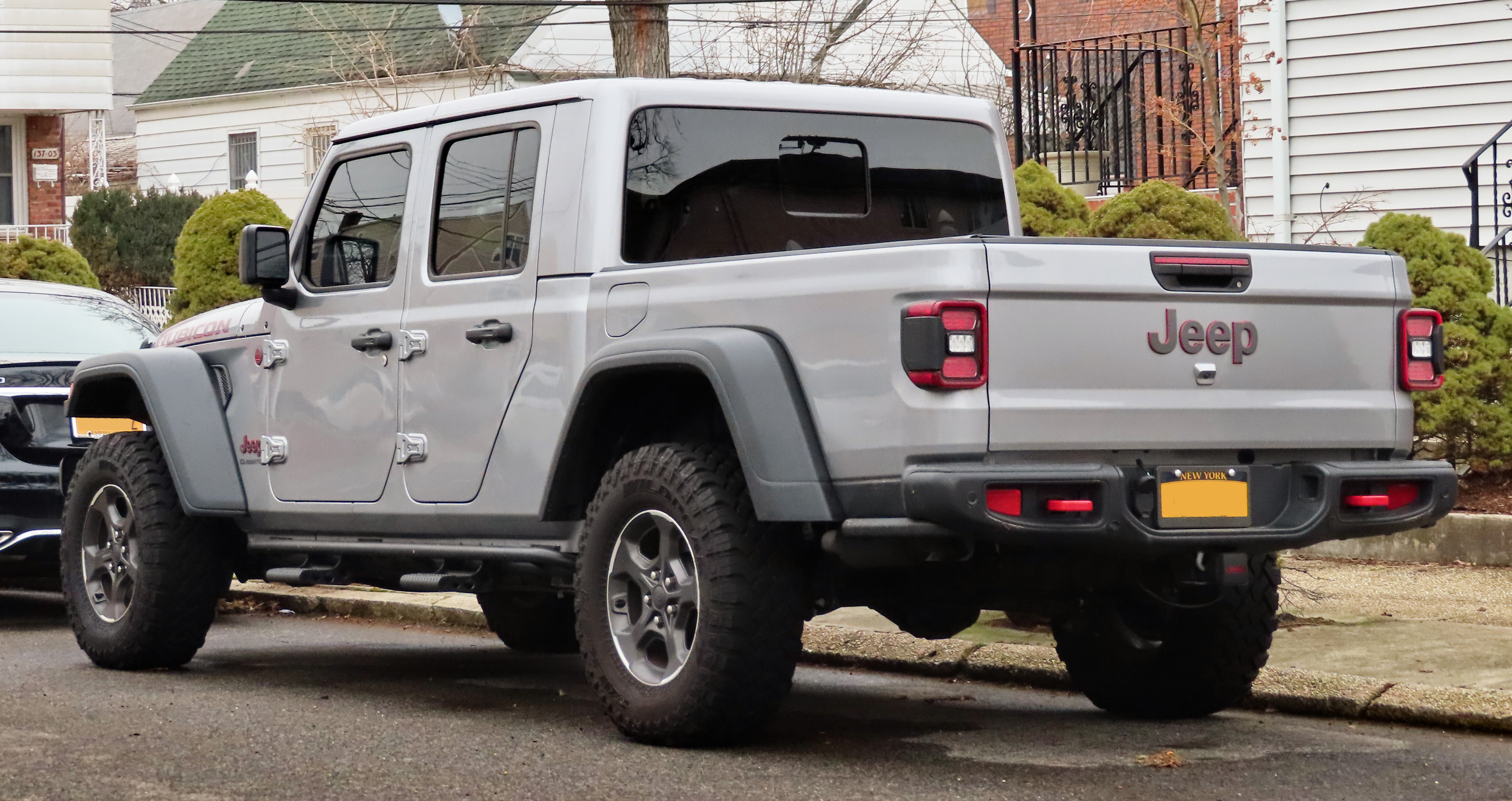
13. **Jeep Gladiator (2020)**The inaugural 2020 model year of the Jeep Gladiator, while generating considerable excitement for its unique blend of Wrangler styling and pickup utility, quickly revealed some significant drawbacks. A common complaint among owners was the noticeable wind noise at highway speeds, which detracted from the cabin’s comfort and refinement. Compounding this, some drivers reported stability issues, making highway driving less assured than expected.
Despite its distinctive design, the Gladiator’s high price tag often didn’t align with the interior quality and features offered. Many found that the cabin materials and technology fell short of expectations for a vehicle in its price bracket, leading to a feeling of overpaying for the available amenities. This perceived value gap was a point of frustration for early adopters.
As a truck, fuel economy is a practical concern for many buyers, and the 2020 Gladiator proved to be disappointing in this regard, even by truck standards. Its consumption figures were often higher than expected, translating into increased running costs for owners. This inefficiency undermined its practicality as a daily driver or work vehicle for some.
Moreover, the Gladiator’s longer wheelbase, a necessity for its bed, inadvertently compromised its off-road capability when compared directly to its Wrangler sibling. While still highly capable, certain challenging terrains became more difficult to navigate, which was a significant point of consideration for the adventurous segment of Jeep buyers. These factors collectively made the first-year Gladiator a truck with a challenging ownership proposition.
Car Model Information: 2021 Jeep Gladiator Sport
Name: Jeep Gladiator (JT)
Aka: Jeep JT (Mexico)
Manufacturer: Jeep
Production: April 2019–present
ModelYears: 2020–present
Assembly: Toledo, Ohio
Designer: Taylor Langhals
Engine: ubl
Transmission: List of Aisin transmissions#Longitudinal rear-wheel drive,Manual transmission
Class: Mid-size,pickup truck
BodyStyle: 4-door pickup truck with removable roof and doors
Related: Jeep Wrangler (JL)
Layout: Front-engine, four-wheel-drive layout
Predecessor: Jeep CJ#CJ-10,Jeep Comanche
Weight: convert
Wheelbase: 137.3 in
Abbr: on
Lk: on
Length: 218.0 in
Width: 73.8 in
Height: convert
Categories: All-wheel-drive vehicles, Articles with short description, CS1 Japanese-language sources (ja), Cars introduced in 2018, Commons category link is on Wikidata
Summary: The Jeep Gladiator is a mid-size pickup truck manufactured by the Jeep division of Stellantis North America (formerly FCA US). It was introduced at the 2018 Los Angeles Auto Show on November 28, 2018, and went on sale in the spring of 2019 as a 2020 model. Based on the same platform as the Wrangler JL, the Gladiator is Jeep’s first pickup truck since the Comanche was discontinued in 1992, although the very similar dual-cab AEV Brute was custom-made using the Wrangler platform from 2013 until 2017 by American Expedition Vehicles under license.
The first markets outside the Americas were Australia and New Zealand. It is now also marketed in China, Japan, South Korea, South Africa as well as in selected nations in South America, Europe, and Southeast Asia.
Get more information about: Jeep Gladiator (JT)
Buying a high-performing used car >>>
Brand: Jeep Model: Gladiator
Price: $29,900 Mileage: 46,541 mi.

14. **Mercedes-Benz X-Class (2018-2020)**The Mercedes-Benz X-Class represented a luxury automaker’s foray into the pickup truck market, but this ambitious attempt at a Nissan Navara-based vehicle largely failed to justify its premium price point. Despite the Mercedes badge, many consumers felt that the truck did not offer sufficient upgrades or differentiation to warrant its significantly higher cost compared to its platform donor.
Perhaps the most significant criticism leveled against the X-Class was that its interior quality simply did not match Mercedes-Benz’s established luxury standards. While certain Mercedes design cues were present, the underlying materials and overall fit and finish were often perceived as being too close to the more utilitarian Nissan Navara, creating a jarring disconnect for buyers expecting typical Mercedes opulence.
Crucially, many of the reliability issues inherent in the Nissan platform remained unchanged in the X-Class. This meant that despite the premium branding and price, owners could still encounter the same mechanical and electronic problems that plagued the Navara, further eroding confidence in its value proposition. The expectation of Mercedes-level engineering was not met by the truck’s actual performance.
The market’s reception of the X-Class was lukewarm at best, leading to its discontinuation after a mere two years of production. This short lifespan is a stark indicator of its commercial and critical failure, underscoring its inability to carve out a viable niche in the competitive pickup truck segment and its failure to meet both brand expectations and consumer demands.

15. **Lincoln Blackwood (2002)**The Lincoln Blackwood holds a unique, albeit brief, place in automotive history as a luxury pickup that lasted just one year in production, specifically in 2002. Its rapid demise was primarily due to multiple design and practical limitations that made it a significant misstep for the luxury brand. It attempted to blend opulence with utility, but ultimately satisfied neither role effectively.
One of the most defining and impractical features of the Blackwood was its carpeted bed, which came with a power-operated tonneau cover. While perhaps intended to exude luxury, this design choice rendered the bed largely useless for actual truck duties, as the carpet could not withstand the rigors of hauling cargo, completely undermining the fundamental purpose of a pickup truck.
Due to its exceedingly low sales numbers and limited production run, sourcing replacement parts for the Blackwood quickly became a serious issue for owners. The scarcity of components meant that even minor repairs could become prolonged and prohibitively expensive, transforming what was meant to be a premium vehicle into a maintenance nightmare.
Ultimately, the Blackwood’s high price tag simply could not justify its extremely limited capabilities and numerous design flaws. It failed to resonate with luxury buyers seeking true utility, and traditional truck buyers found its opulent, yet impractical, features baffling. The Lincoln Blackwood stands as a cautionary tale of a truck that was more trouble than it was worth right from the start, a testament to how essential practicality and reliability are, even in a luxury package.
The journey through these 15 truck models serves as a crucial reminder for anyone venturing into the pickup market. While the allure of a powerful, versatile truck is undeniable, the hidden costs and frustrations associated with certain models can quickly outweigh their benefits. Our data-driven analysis underscores the importance of thorough research, focusing on proven reliability records, long-term durability, and actual ownership experiences rather than falling for attractive price points or flashy features alone.
Car Model Information: 2002 Lincoln Blackwood Base 4dr Crew Cab SB 2WD
Name: Lincoln Blackwood
Manufacturer: Lincoln Motor Company
Production: September 25th 2000 – August 8th, 2002
ModelYears: 2002 (United States),2002–2003 (Mexico)
Assembly: Claycomo, Missouri
Successor: Lincoln Mark LT
Class: luxury car,pickup truck
BodyStyle: pickup truck
Layout: Front-engine, rear-wheel drive layout
Related: Ford F-Series (tenth generation),Lincoln Navigator
Engine: Ford Modular engine#5.4 L
Transmission: Automatic transmission
Wheelbase: 138.5 in
Abbr: on
Length: 220.2 in
Width: 78.0 in
Height: 73.6 in
Designer: Patrick Schiavone
Caption: 2002 Lincoln Blackwood
Categories: All articles with unsourced statements, Articles with short description, Articles with unsourced statements from November 2024, Cars discontinued in 2002, Cars introduced in 2001
Summary: The Lincoln Blackwood is a luxury pickup truck that was marketed by the Lincoln division of Ford Motor Company for the 2002 model year. The first pickup truck marketed by Lincoln, the Blackwood was derived from the Ford F-150 SuperCrew and the Lincoln Navigator. Drawing its name from its simulated black woodgrain cargo box, the Blackwood was offered solely with a black-painted exterior.
Although the concept vehicle had a positive public reception, the production Blackwood fell far under sales projections in the United States and Mexico. After the 2002 model year, the Blackwood was discontinued in the United States, with a short run of 2003 models produced for Mexico. In total, only 3,383 units were produced, making it both the rarest and shortest-produced Lincoln model line.
For 2006, Lincoln entered the pickup truck segment for a second time with the Lincoln Mark LT — again based on the Ford F-150 —which, even though it also sold poorly, was more popular than the Blackwood.
The first Lincoln vehicle manufactured exclusively outside of the state of Michigan since 1958, the Blackwood was assembled by Ford at its Kansas City Assembly facility in Claycomo, Missouri, alongside the F-150 from September 2000 to August 2002.
Get more information about: Lincoln Blackwood
Buying a high-performing used car >>>
Brand: Lincoln Model: Blackwood
Price: $9,900 Mileage: 115,113 mi.
Read more about: When Vision Fails: 14 Automotive Design Flaws That Crippled Sales and Reputation
Making an informed decision is paramount to ensure your truck remains a dependable asset rather than a consistent source of repair bills and aggravation. By understanding which trucks are prone to becoming liabilities before even reaching 80,000 miles, you are better equipped to make a choice that truly serves your needs and stands the test of time, saving you thousands of dollars and countless headaches in the process.

